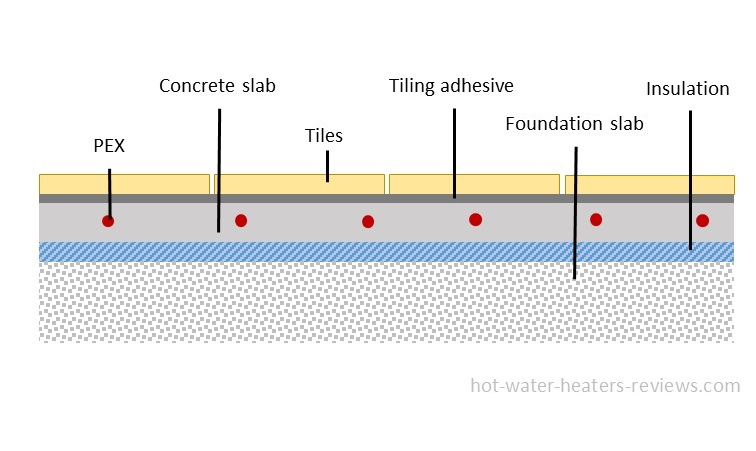- Home
- Reliance Water Heaters
Reliance Water Heaters: Your Comprehensive Guide to Models, Features, and Buying Tips
 Reliance gas water heater
Reliance gas water heaterLooking for a reliable and efficient water heater for your home or business?
Check out our comprehensive guide to Reliance water heaters. As a subsidiary of the renowned A.O. Smith Corporation, Reliance is a top manufacturer of electric and gas-powered water heaters. From storage tanks to tankless models, their diverse range of products caters to all hot water needs.
Read on to discover more about their models, features, and buying tips.
Reliance water heaters: Things to consider
Reliance electric water heaters
Reliance offers a wide range of electric water heaters, available in multiple sizes and models, all backed by a warranty ranging from 6 to 12 years. For optimal performance and durability, models with an extended 12-year warranty are highly recommended. These models feature heavy-duty anodes and self-cleaning systems, providing superior corrosion protection and lasting efficiency.
Most electric water heaters, particularly the tall and standard types, feature two heating elements, providing a high 0.9 efficiency rating and faster recovery time.
For even greater energy efficiency, Reliance also offers hybrid or heat pump models, which combine electric elements with a heat pump to achieve an impressive energy factor of over three times that of standard models. These models are Energy Star compliant and known for their ultra-efficiency. Whether you're looking for a traditional electric water heater or a hybrid model, Reliance has a solution to meet your needs.
Reliance water heater heat pumps (hybrids)
Reliance heat pumps, also known as hybrids, are an ideal solution for homeowners seeking electric heating and increased energy savings compared to standard electric units. These Energy Star compliant models offer high recovery rates, providing sufficient hot water for families of up to five members.
Hybrid technology combines two heating technologies, and when there is a high demand for hot water, the unit automatically switches from heat pump to hybrid mode, utilizing the electric heating elements to improve efficiency.
According to the manufacturer, annual energy costs range from a little over $100 to approximately $170 (as of 2020), with estimated savings of around $300 and a payback period of approximately three years.
Reliance heat pumps feature a simple control panel with multiple settings and operating modes to maximize energy savings. The control center allows you to set and control temperature and operating modes or check the status. There are four operating modes to choose from, including a default hybrid mode, as well as options to save, produce more hot water, or protect against freezing and unwanted energy loss.
Reliance heat pumps are backed by a 6 to 10-year warranty on the tank and its parts, providing added peace of mind to homeowners.
Reliance gas models
Reliance gas water heaters are available in both natural and propane gas versions and come in various sizes and types. Tank-type models store hot water, while tankless ones heat water on demand. From economy models to high-demanding homes, Reliance offers gas water heaters to fit any budget.
While most gas water heaters still use the old-fashioned pilot light, the best models come equipped with advanced features like electronic ignition, also known as hot surface ignition, which is more reliable and energy-efficient. Additionally, Reliance offers eco-friendly models with low NOx emissions and Green Choice gas burners, which can reduce emissions by up to 33%.
Reliance gas water heaters are built to last, thanks to the factory-built powered anode rod, which provides longer life and eliminates the need for services. The Sta-Kleen system is another unique feature of Reliance gas water heaters. It uses a specially designed dip tube to reduce lime and sediment buildup inside the tank.
The best Reliance gas water heaters are Energy Star approved, with energy factors of at least 0.67, making them highly efficient. They offer high water recovery for high-demanding homes, and the most efficient models are condensing.
Choose Reliance gas water heaters for their reliability, efficiency, and eco-friendliness.
Reliance tankless models
The tankless group of Reliance water heaters does not utilize a storage tank but a heat exchanger, allowing for on-demand water heating and an endless and continuous supply of hot water.
Reliance's tankless units are small and compact, making for easy and space-saving installation, mainly on the wall. Their high-efficiency operation is their greatest advantage, particularly the condensing type, which carries the longest warranty of 15 years.
Top features
Reliance's tank-type water heaters are known for their high-quality features, such as the Sta-Kleen and automatic self-cleaning systems, which help to prevent sediment build-up and prolong the life of the tank. Additionally, the non-sacrificial power anode provides excellent corrosion protection for the metal tank.
On the other hand, the tankless models utilize advanced electronics and cutting-edge condensing technology, making them highly efficient and reliable. These features also make problem diagnosis easier and more straightforward, ensuring that any issues can be resolved quickly and efficiently.
- Home
- Reliance Water Heaters






